
views
X
Expert Source
Bernat FranquesaLicensed Soccer Coach & Head of Methodology at APFC
Expert Interview. 3 March 2020.
The ability to read your opponent and the field is invaluable, but even if you lack this skill, there are techniques you can employ to make yourself a more dependable defender. Prepare your body, prepare your mind, and whatever you do, don't allow that ball to sneak past!
Preparing to be an Effective Defender
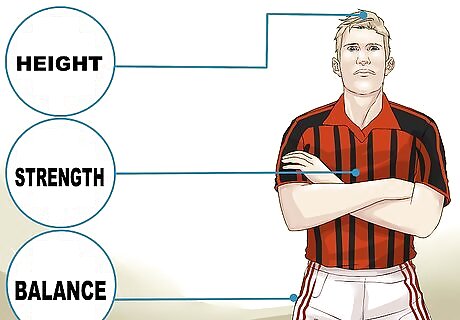
Establish a training regimen. Defenders in professional soccer are generally the tallest players on their team and are more solid than their teammates. This is because, as a defender, your objective is to protect your goal from shots by any means. This will require: Strength, both for fending off aggressive opponents and to clear the ball once you regain possession. Weight train your legs to improve your ball clearing power and header potential. Don't neglect your upper body or you may be unable to jostle your way to the ball when going for a header. Balance, for staying upright, tackling, and responding to on-field developments. Train your balance through specific exercises, like squats, and improve your core strength to encourage greater full body stability.
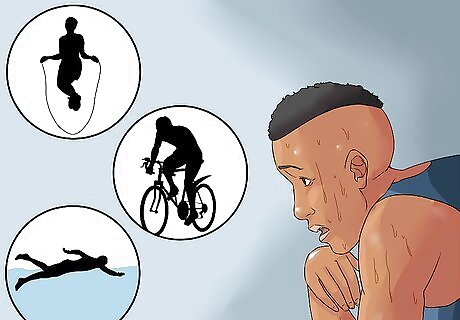
Increase your cardiovascular activity. All soccer players are expected to be high endurance runners, but defenders should be tireless. You should develop this characteristic throughout your career in the sport if you wish to become an exceptional defender. To achieve this end, you might consider taking up swimming or cycling. Give extra focus to the development and performance of your legs. Strong legs will enable you to challenge opponents for headers more easily. Improve your vertical jump height. Jump rope to make you a stronger header contender.
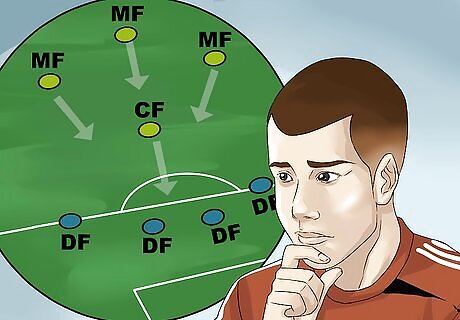
Raise awareness of positional developments on the field. Positioning is essential for every defender, as poor positioning can allow unnecessary shot through your defensive line. As a defender, you are the last line of defense before the goalie. You must keep a wide awareness of the situation on the field as it develops, including: The position of opposing strikers. Midfielders adding pressure to the opposing team's attack. The position of your defensive line.
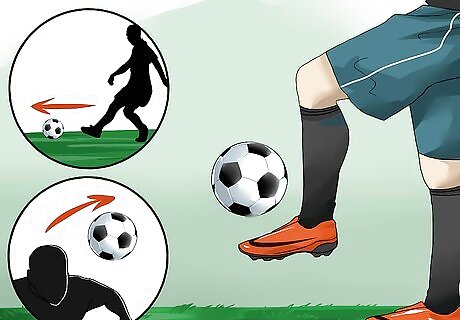
Polish your basic skills. As a defensive player, you'll be expected to have excellent ball handling skills. A sloppy pass or poor control can lead to repossession of the ball by the other team, which could end disastrously for yours. You should drill regularly with other defenders to maintain your ball handling skills and develop your adaptability to the defensive styles of different players.

Know where to look. Experts consistently recommend that you watch the hips and the ball when on the defense. Talented strikers have many tricks to use against defenders, like body feints, but you can see through these by watching the challenging player's hips. This will often clue you in as to where he is headed. It's important to keep a close eye on the ball and not be fooled by fancy footwork; strikers that rely on tricky feet will be undone if you refuse to be distracted.

Cover opponents and their angles of approach. The dimensions of the soccer field are unchanging, and the directions from which an opponent can approach your net limited. You should train your mind to instantly analyze the approach of any player on the opposing team. Ask yourself: How will he shoot on net? Does he have any support he might pass to? How might his fellow strikers support him? How will his fellow strikers shoot on net?

Be determined in your mindset. Defenders should never give up, even in the worst situations. When the defense gives up, the goalie is without support, which can be dangerous for the goalie physically and for your team in terms of points. As a defender, you will need to be willing to sacrifice whatever necessary to stop goals, including your body. For example, if a player is about to shoot, you have to be willing to throw your body, legs or even your face in the way to block it. Defenders need to be highly competitive with a will to succeed, and never give in no matter how bad the situation looks.
Defending against an Attacker
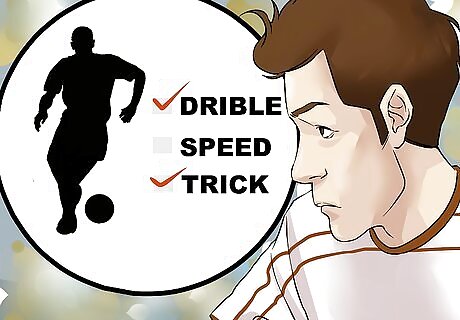
Evaluate the opposing players style. If the striker you are covering prefers quick, agile plays, you'll want to play very aggressive defense and stick with him closely to prevent him from taking advantage of any gaps. Players that rely on tricks of footwork to confound defense can be undone by careful attention, on your part, to his hips and the ball. You might also consider setting a trap for offensive players by allowing a gap to form in the defense. If you attempt a trapping maneuver, you need to be sure of the other player's abilities as well as your own. If he surprises you with a sprint that is faster than you expected, you may be left in the dust and him with a shot on net.
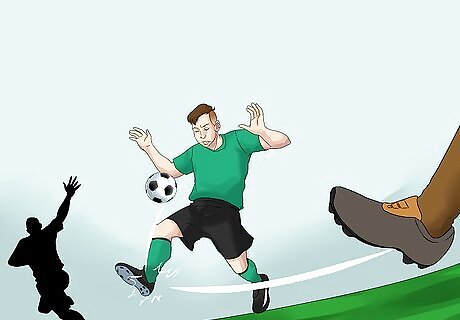
Cut off attacks on net and passes between players. First and foremost, your responsibility as a defender is to protect the net. You should keep yourself between the strikers of the other team and the net at all times, but there may be occasions where you need to cut off a dangerous pass to an open player. It's important for you as a defender to keep your awareness sharp and make judgement calls as best you can. If you react slowly to changes on-field, your defense will suffer.

Limit your stabs at the ball. Jabbing your foot out to try to haphazardly prod the ball away from your opponent can compromise your balance and give him an opportunity to pass you by. You should leave roughly an arms length of space between you and your opponent. Wait until the right moment to steal the ball away by back stepping until your opponent makes a mistake.

Angle your hips and your approach. It's easy for the opposition to evade a defender that approaches head on, so you should avoid running straight at opposition strikers. When confronting an offensive player, try to approach at an angle that forces the opposition to use his non-dominant foot. You can better ensure the right hip angle by leading with one foot while you cover an offensive player. This way you can turn easily in response to developments on the field.
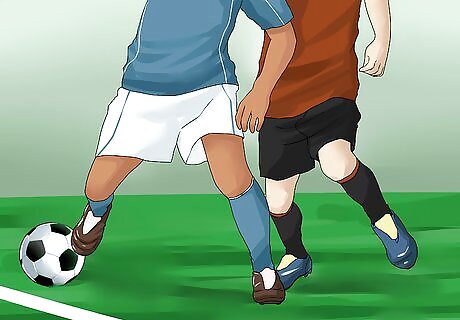
Herd attackers into positions of pressure. You can do this by cutting off the angle of an attacker's approach in a way that is accessible to other defenders, like midfielders. If you see teammate midfielders on the approach, adjust your cut off angle to bring the pressure of another defender down on the attacking player you're covering.
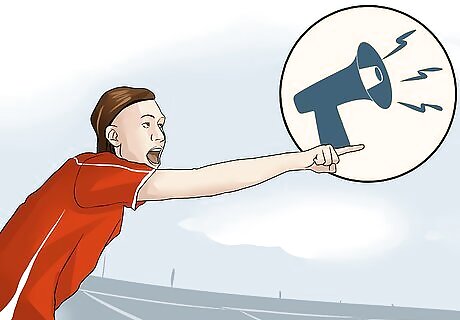
Communicate with fellow defenders. Defenders need to communicate clearly with the keeper, the midfield, and each other. If the defense is playing an offside trap, or if a defender is not in line or not marking a player, he should be informed of this loudly and quickly. Defenders that want the keeper to get the ball, or receive a passback, should vocalize their expectations. Get to know your teammates. Communication is easier when the defenders and other players know each other.
Drilling Your Defense
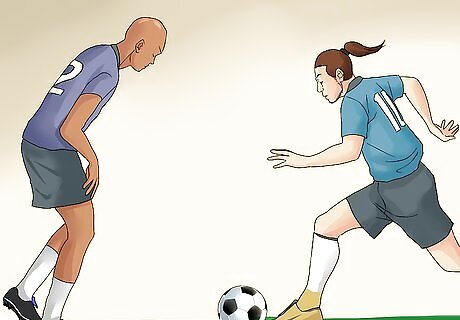
Practice one-on-one defense. Set up a grid for you and your practice partner that is about seven by twenty yards long. Both you and your partner should start at opposite ends of the grid, with your partner in possession of the ball. Your partner should then attempt to drive the ball to the other side of the grid. The goal of the defending player (that's you) is to: Win the ball from the attacker. Force the attacker out of bounds.
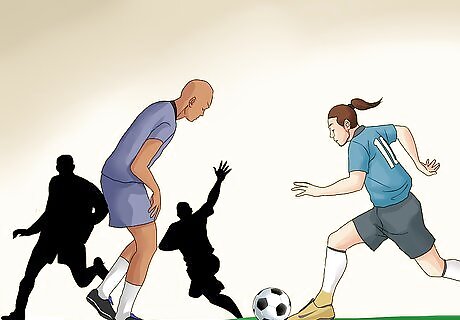
Try a faster paced two-on-two drill. You'll need a larger grid for this exercise. One that is approximately 25 yards by 40 should do nicely. This will allow for more breakaway plays between players, which will more closely model a real game scenario. Split a group of four players into two pairs and have each pair defend one side of the grid. Each pair of players should attempt to win the ball from attackers or force attacking players out of bounds. To keep this drill fun, you might consider alternating between offense and defense between pairs.
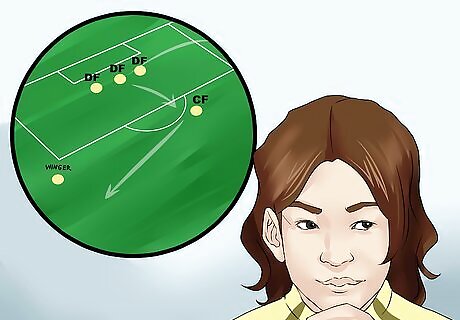
Learn to defend against crosses. Mark off a 44 by 30 yard box that encompasses the entirety of the net and penalty area, extending a ways beyond the penalty area towards midfield. You'll need two teammates at the edge of the 18 yard box for crossing the ball, two "attacking" players in front of the net, and three defenders (including yourself). One of the attackers should pass the ball to one of the wing players. The wing player will read the field and, when prepared, cross the ball to an attacking player. Defenders should coordinate to stop the attack on net and clear the ball or regain possession.
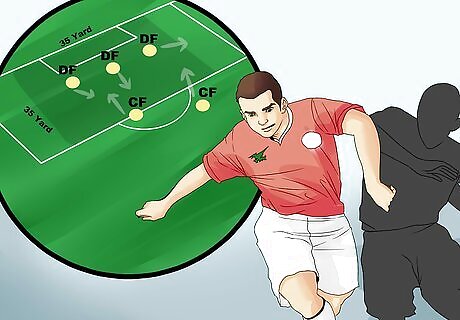
Enact a full-on penalty area defensive drill. Measure out a 35 by 35 yard area for this exercise that includes a full size net at one end.To perform this drill, you'll need an attacking "team" with five players in a 3-2 formation, with three players acting as midfielders and two as the forwards. The defending "team" will need four players, including a goalkeeper, in a 3-1 formation. The lead attacker should begin the drill with possession of the ball, just inside the boundary of the grid, opposite the net. Defenders should work to either regain possession of the ball and clear it or force the attackers out of bounds.

















Comments
0 comment